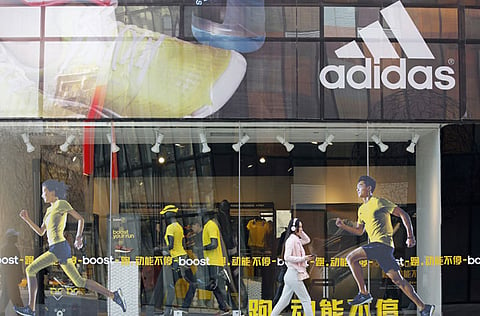Adidas cuts sales outlook on currency moves, weak Europe
Now sees 2013 sales up by low-mid single percentage

Frankfurt: German sporting goods firm Adidas cut its sales forecast for 2013 after adverse currency moves and lacklustre European trading took their toll in the second quarter.
The world’s second largest maker of sportswear after Nike
said it now expected group sales to rise by a low to mid single-digit percentage in 2013, compared with previous guidance for a mid single-digit rate.
“The lacklustre trading environment in Europe and the unfavourable development of several currencies versus the euro indicate that the group’s goals for the full year will be more challenging to reach than when initially announced,” Adidas said on Thursday.
Like rival Puma, analysts were expecting the results to show the effects of a weakening Japanese yen and British pound against the euro, so the sales target reduction did not necessarily come as a surprise.
“However, market estimates for Adidas are high, and the market has been spoilt in the past because Adidas normally doesn’t just meet targets, but exceeds them,” Metzler analyst Sebastian Frericks told Reuters.
Shares in Adidas, which hit an all-time high of €86.87 this week, dropped by 3.2 per cent at the open, the biggest fall on the DAX index of leading German stocks.
Frericks said it was important, though, that Adidas had maintained its forecasts for an operating margin of near 9 per cent in 2013 and for earnings per share to rise by 12-16 per cent to €4.25-4.40.
For the second quarter Adidas reported sales of €3.38 billion ($4.5 billion), down a greater than expected 4 per cent, and operating profit of €252 million, compared with expectations for €261 million.
Adjusted for currency effects, sales would have remained stable at around 3.5 billion euros.
Sales in western Europe fell 11 per cent on a currency-neutral basis. Last year, Adidas benefited from the sale of products related to the European soccer championships and the London Olympics.
The company’s Reebok brand, however, returned to growth in the quarter with sales increasing 11 per cent on a currency-neutral basis.
Sign up for the Daily Briefing
Get the latest news and updates straight to your inbox


